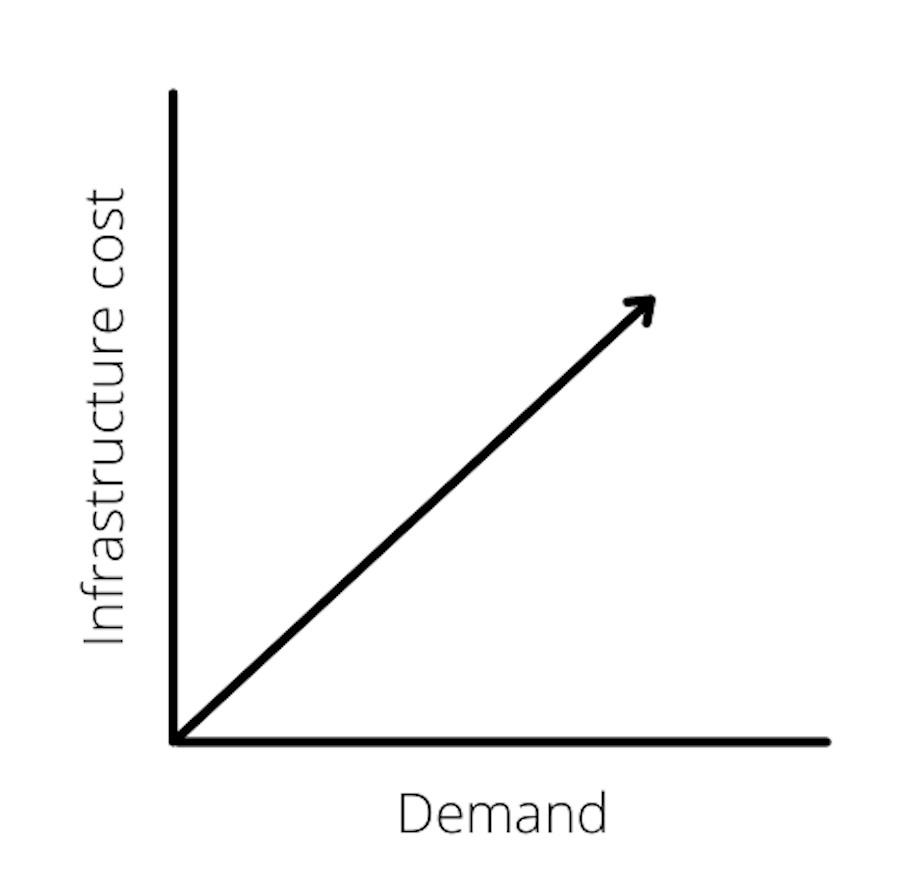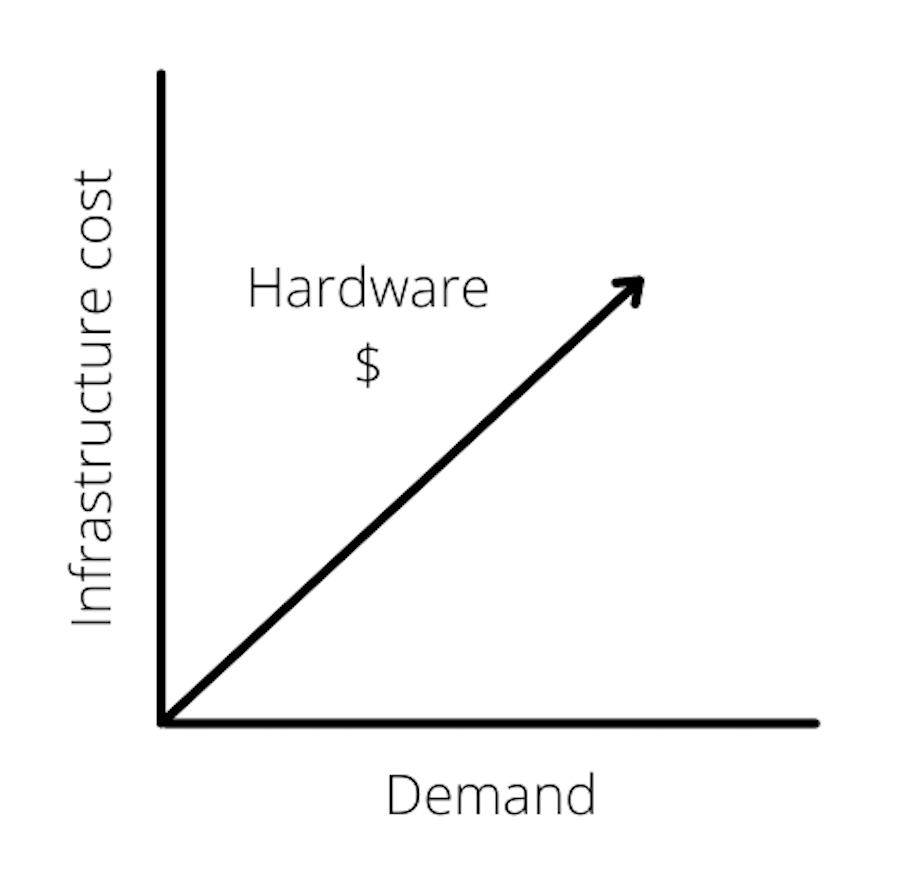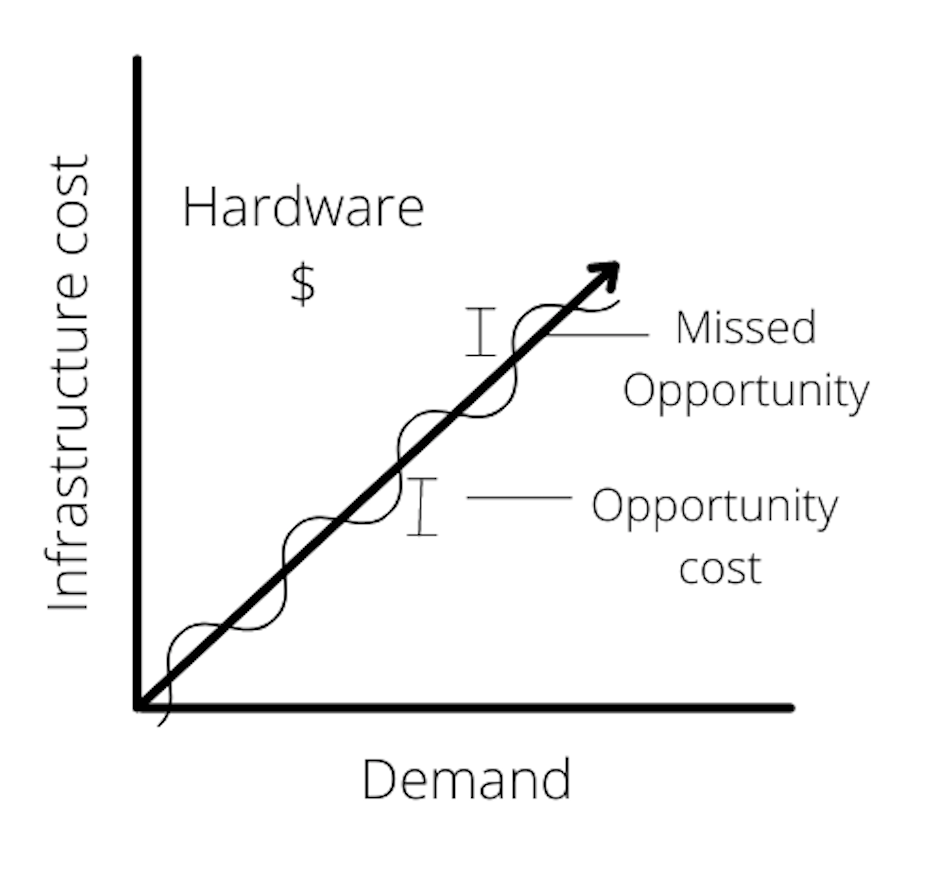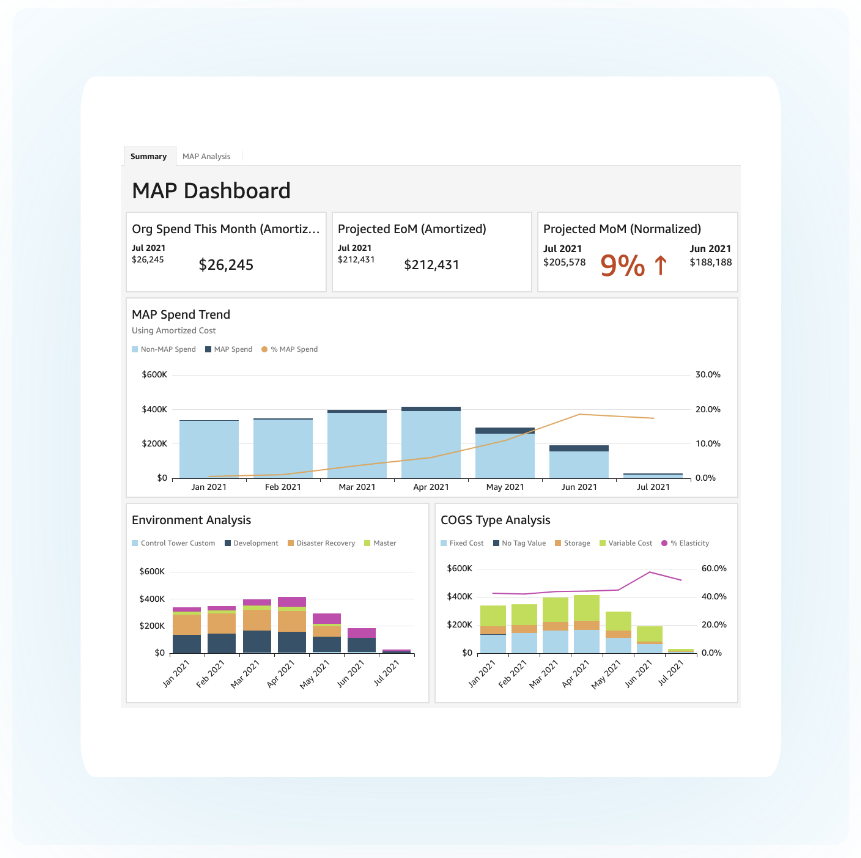In 2021, the most popular vendor in the cloud infrastructure services market, Amazon Web Services (AWS), controlled 32% of the entire market. To encourage more businesses to choose AWS, Amazon started a program to help accelerate migration — the AWS Migration Acceleration Program (AWS MAP).
Below we’ll cover the details of the program, the potential financial benefits for companies looking to take part, and how to make sure you get all the financial benefits available.
What Is AWS MAP?
AWS MAP is a program offered by Amazon to help businesses migrate their programs and applications, or workloads, to AWS quickly and efficiently.
The program includes a process for taking stock of your current workloads, estimating the financial gain of migrating those workloads, and for Amazon to provide funding in the form of financial credits to help minimize the risk of migrating those workloads.
Your migrated workloads are identified by AWS through a required tagging system, which allows Amazon to generate a cost and usage report (CUR). Using these tags and your CUR, Amazon determines whether or not you’re eligible for a credit to your account.
How Does The AWS Migration Acceleration Program Work?
AWS MAP has three basic steps: determining whether or not you’re ready to migrate to AWS, getting your workloads ready to migrate, and completing the migration. These three phases are meant to reduce the complexity and costs of migration and improve your chances of success.
- Determine whether or not your workloads are ready to migrate. This phase includes completion of AWS’s readiness assessment, which includes identifying capability gaps in your workloads and building a total cost of ownership (TCO) model to determine whether or not a migration makes financial sense.
- Get ready to migrate. This phase includes determining the steps you need to take to complete a successful migration and prioritize the workload order.
- Migrate and streamline your tags. This includes actually migrating your workloads, and ensuring they’re properly tagged.
You can earn financial credits by properly tagging and migrating eligible workloads. This incentivizes businesses to migrate as many workloads as possible to AWS.
Why Should Companies Care About The AWS MAP Program?
Businesses should care about the AWS MAP program because it helps to streamline costs. As demand for your programs and applications grows, so will your infrastructure costs.

If you’re managing your systems on-premise, you’ll have to regularly make infrastructure investments to manage that demand:
 But, in reality, demand isn’t always stable. Sometimes, you have less demand than you can manage, which leaves you with an opportunity cost. Sometimes, you might unexpectedly have more demand than you can manage, which may require you to postpone new projects or close your door to new customers temporarily:
But, in reality, demand isn’t always stable. Sometimes, you have less demand than you can manage, which leaves you with an opportunity cost. Sometimes, you might unexpectedly have more demand than you can manage, which may require you to postpone new projects or close your door to new customers temporarily:
 The goal is for supply and demand to be as close as possible, so that you’re never paying for more resources than you need, and so that you can handle unexpected demand when it happens.
The goal is for supply and demand to be as close as possible, so that you’re never paying for more resources than you need, and so that you can handle unexpected demand when it happens.
When you work with AWS, you only pay for what you need. In addition, their credit system works in such a way that the more you grow with AWS, the cheaper it becomes to do business with them. Finally, you don’t have to pay to maintain those systems or keep them secure.
How To Get The Biggest Possible Financial Gain From The AWS MAP Program
Of the three financial benefits you gain from participating in AWS MAP, only one isn’t guaranteed — the financial credits. If your workloads aren’t tagged, you won’t get credits for them, and AWS won’t retroactively provide credits for workloads tagged after they’ve been migrated.
To realize the biggest possible financial gain, you need to make sure everything is tagged properly before it’s migrated.
But in reality, it’s almost never that simple.
There are typically two main personas involved in an AWS migration: One is an executive or financial professional who entered into the agreement and has an expectation for a certain amount of credit. Then, there’s the technical professional who wasn’t involved in the agreement process, but was told they need to ensure everything is tagged.
If those two personas aren’t working together in lockstep to ensure both parties understand the benefit to the business, workloads can get migrated without being tagged properly, and the potential for credits are often missed.
To make sure your business isn’t a victim of this common mistake, there are three things you can do:
1. Know what workloads are eligible for credit and whether or not they’re tagged
The hardest part of AWS MAP can be simply having visibility into what’s eligible to receive a financial credit, and whether or not assets are tagged properly. For a full picture, you need to know:
- Which workloads are eligible for credit
- Which workloads are not eligible for credit
- Of those eligible workloads, how many are tagged
- Of those eligible workloads, how many are not tagged
- Of those workloads not tagged, which are the most important to tackle first
CloudZero provides businesses with a real-time view of which workloads are tagged and which are not, ensuring you never miss out on an AWS MAP credit because of a tagging oversight.
Our platform automatically prioritizes workload tagging by associated cost, so you can immediately tag your most expensive resources to start receiving credit as quickly as possible.
2. Accurately predict the credits you’ll receive
AWS MAP extends credits on a quarterly basis, and only after you’ve migrated $50,000 worth of workloads. Finance teams need to accurately predict the credit they’ll receive. If everything is tagged, the AWS service agreement promises the following:
|
Monthly Uptime Percentage |
Service Credit Percentage |
|---|---|
|
Less than 99.95% but greater than or equal to 99.0% |
10% |
|
Less than 99.0% but greater than or equal to 95.0% |
25% |
|
Less than 95.0% |
100% |
But these percentages aren’t helpful without clear visibility into how many of your workloads have actually been tagged. CloudZero’s MAP workload dashboard summarizes your MAP credits to accurately estimate the amount of credits you’ll receive based on what you actually have tagged.

3. Understand how many credits you’ve received historically
Historical accounting capabilities — like being able to see how many credits you’ve received since being a part of AWS MAP or comparing the credits you’ve received quarter-to-quarter — are critical to ensure you meet your business’s financial expectations in any given period.
With CloudZero, you can compare your tagged MAP spend to your total AWS spend within any given time frame to see how much you’re saving. You can also drill down further into any account or service to see the cost and credit associated with an individual workload.
Without An Accurate Picture Of Your Workloads’ Tags, You’re Likely Missing Out On Credit You Deserve
Accurate visibility into the status of your AWS migration is critical for ensuring you receive the biggest financial gain. It’s easy for untagged workloads to fly under the radar for long periods of time without a system to identify them easily.
With CloudZero, you can easily see which eligible workloads haven’t been tagged and prioritize them based on their cost, and the value of your potential credit while.  to learn more about how CloudZero can support you while you’re a part of AWS MAP.
to learn more about how CloudZero can support you while you’re a part of AWS MAP.








